To minimize manual work with AMADA combined machines
Those who work in the field of sheet metal processing know perfectly how punching and laser cutting represent two cornerstones of daily operation and have always been at the center of an evolutionary process aimed at maximizing efficiency, the versatility and speed of the production processes as well as the quality of the final product
The fact that there are overlapping areas between punching and laser cutting has meant that, especially in the past, many considered them not only alternative possibilities, but also in direct competition. In fact, the two options are not so similar as to fully justify such a view: for example, there are operations pertaining exclusively to a punching machine, such as deformations and rusting, but also cases when we think immediately to the laser as in the case of the cutting of thick materials; the laser, moreover, has never had constraints on geometric shapes, does not have a tool warehouse to relate to, has an extraordinary precision but, maybe, not the same speed of a punching machine, which moreover - as anticipated - lends itself to an infinite number of processes such as deformation, threading, embossing and marking, remaining an excellent choice in case you have high demands for automated productivity without oversee.
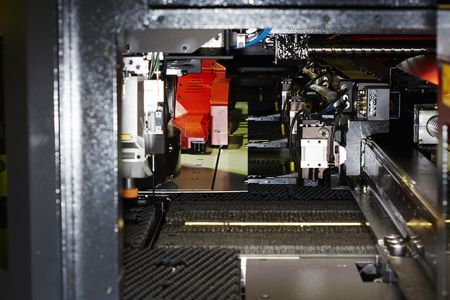
Thus, over time, it became clear that the theory of competition was far from perfect, especially following the constant improvement in performance of both solutions, which in this respect have somehow come closer.
The contemporary punching machines remain extremely versatile, flexible and cost-effective, able to process different materials and guarantee high levels of precision and productivity thanks to innovations such as automatic tool change, the performance of the electric servo motor, the digital management of the tools and the dedicated threading stations, to which is added a level of energy efficiency much higher than the hydraulic models of the past.
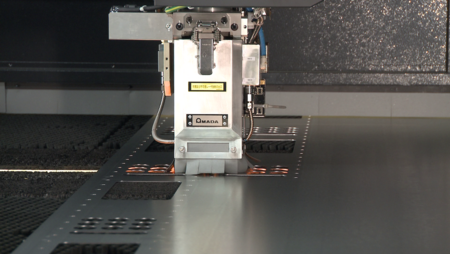
The trend of innovation has also invested solutions for laser cutting: after decades of CO2 sources, now extremely reliable, able to give the maximum on complex shapes, with many curves and tiny details even on thick materials, fiber generators have arrived, capable of unparalleled performance both in terms of quality - even on very thin materials - and speed of execution, so much so as to suggest investments in automation to accommodate the very high production rates of the machines.
Combined machines, the best of both worlds
Rather than competition, we realized how much more correct it was to speak of complementarity, of synergy between punching and laser cutting. Or rather, we have understood that it would be possible to make the most of the peculiarities of both and automate the process. The fact that both are able to perform a certain process does not mean that, in terms of cost, speed and quality, the results are necessarily overlapping: for example, today lasers are very fast, but if the need is - simplifying - that of many identical shapes on the same sheet metal, a question of cost-efficiency might suggest the use of a punching machine.
This means that, having to choose between the two machines, it is always necessary to evaluate the work mix that the new system will have to manage, then adding considerations about the level of automation that you want to achieve.
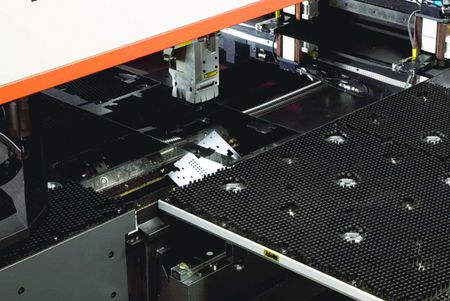
Another possibility is the combined machine, which combines the punching unit and the laser cutting unit in a single frame. The combined machine exploits the above mentioned synergy and allows to realize, in total autonomy and reducing the material handling between operations, products capable of exploiting the peculiarities of both technologies.
The greatest convenience of a combined machine is that a single setup can make very complex pieces, which mix cuts of particular shapes with punctures, embossing, threads and so on.
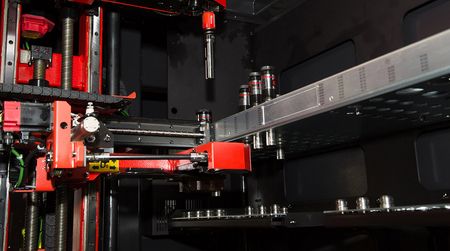
Another central point, and here we refer to the reduction of manual work highlighted in the title, is automation: if in the factory the process is not fully automated and, for hypothesis, comes an urgent order of complex parts that require laser cutting and punching, the pieces must be transported manually from one machine to the other and this could determine damages and losses of materials, lead time that lengthen, times of delivery at risk and so on.
Therefore, a combined machine, in addition to being the best of both worlds and allowing the maximum allowed flexibility, is also the one that reduces costs by automating the process.
AMADA combined machines and their benefits
AMADA is a brand of absolute reference in the field of combined machines, that, as mentioned above, mix the benefits of electric punching with those of fiber laser cutting, ensuring excellent performance and all the flexibility that today is essential to support increasingly chaotic and unpredictable markets. Here are the three main solutions, whose knowledge can be deepened on the pages of the site or by downloading the relative brochures:
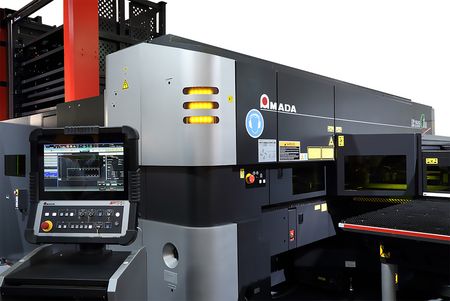
LC-C1 AJ is a combination with 20 ton electric punching unit and 3 kW laser, capable of combining the performance of AMADA electric punching to the low energy consumption of fiber laser.
In more detail, the machine is equipped with a turret of 46 stations + 4 threading stations that ensure the integration of the machining, with significant time and work savings. To this, LC-C1 AJ adds a 3 kW AMADA-AJ fiber single-module laser source that ensures savings of up to 70% compared to CO2 technology, all complemented by an innovative table cabin design, by the AMADA ID Tooling tool identification system that prevents setup errors, by an automatic laser beam collimation system and by the scrap suction unit, which prevents them from rising during processing. The speed of execution can be further increased thanks to the use of AMADA automation components/systems.
For more information, visit the page LC-C1 AJ.
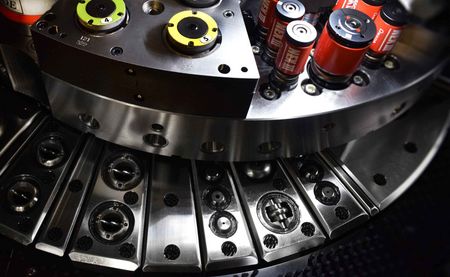
EML-AJ is a 30 tons/3 kW fiber combination designed to minimize manual operations; it is based on the combination of punching with electric servo-motor to laser cutting with a 3 kW AMADA fiber generator. The machine is based on a safe and compact design and integrates a turret with 44 stations + 4 integrated threading stations; as for the laser, the automatic 4-station nozzle change ensures maximum utilization of the machine working time. EML-AJ is designed to ensure minimal operator intervention and can be integrated with additional automation systems to simplify and ensure efficient processing: in this regard, the EML-2513AJ PDC model is equipped with a PDC mold change unit (Punch Die Changing) that automatically loads and unloads the tools, for an additional level of efficiency.
For more information, visit the page EML-AJ.
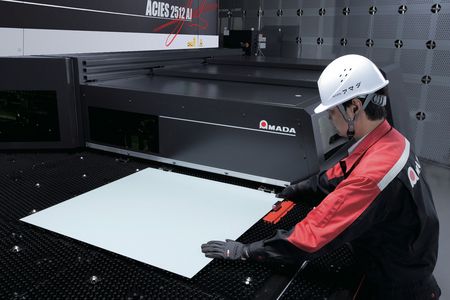
ACIES-AJ represents the most advanced AMADA technology in the world of combined laser punching machines, capable of low management costs and uncompromising performance. The machine integrates an electric punching unit of 30 tons and a fiber laser cutting unit of 3 kW, with the addition of the automatic tool change capable of accommodating 300 punches and 600 dies; all this reduces the downtime and, at the same time, guarantees long continuous machining cycles.
To all this, it is possible to add several automation options, such as automatic plate loading/unloading systems, which allow the continuous operation of the machine and reduce the processing time, with all the (beneficial) consequences of the case. To this is added, always in the perspective of automation, the automatic nozzle change system, the (automatic) cleaning of the cutting plate, useful for eliminating residues, and the (automatic) scrap removal system.
For more information, visit the page ACIES-AJ.